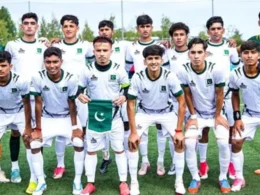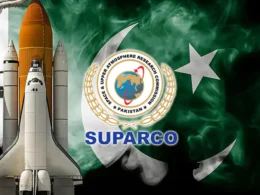In cities, towns, and villages across Pakistan, one question quietly haunts more households than we care to admit: Is our drinking water actually safe?
For many, the answer is no — and the consequences are quietly devastating. From rising child illness rates to long-term kidney and liver complications in adults, the cost of unsafe water is showing up in hospital wards, missed school days, and monthly budgets that stretch beyond breaking point. In a country blessed with rivers, glaciers, and rainfall, it feels like a cruel contradiction: we don’t lack water — we lack water that won’t make us sick.
An Invisible Crisis with Visible Impact
Whether you’re walking through the narrow lanes of Lyari, the fields of southern Punjab, or even the outer sectors of Islamabad, one thing becomes clear: water that looks clean isn’t always safe.
According to a 2024 report by the Pakistan Council of Research in Water Resources (PCRWR), over 70% of water samples collected from across major cities were found unfit for drinking. High sodium levels, nitrate contamination, and harmful pathogens like E. coli and T. Coliforms were among the most common dangers.
In rural areas, especially parts of interior Sindh and Balochistan, families — many of them already grappling with poverty — have little choice but to drink from hand-pumps connected to untreated bore wells or from ponds shared with livestock. In these areas, chronic diarrhea, stomach infections, and skin rashes have become so normalized that they’re no longer treated as emergencies — just part of life.
Even in more developed areas, households boil their water, hoping that’ll be enough. But boiling doesn’t remove heavy metals, chemical residue, or excessive sodium — contaminants that now show up in both well water and municipal supply.
The High Cost of Playing It Safe
In urban Pakistan, the story takes another shape. Many middle-income households rely on private RO (reverse osmosis) plants, small storefronts selling filtered water at lower prices. But a recent Karachi-based study revealed that only 1 in 5 RO plants met basic safety standards. Some use decade-old filters, while others refill bottles from unknown, untreated sources.
Those with more financial room have turned to bottled water brands. Names like Nestlé Pure Life, Aquafina, Culligan, Waterverse and Pakola Water have built strong reputations for delivering clean water with consistent quality. For many, these brands offer peace of mind. But that peace comes at a price: where families have to pay for the water.
That might work for some, but for the majority of families in Karachi, Lahore, Faisalabad, or Quetta, it’s a serious financial stretch.
Brands Stepping Up — But It’s Not Enough Alone
Despite the scale of the crisis, some companies in Pakistan’s bottled and filtered water sector have begun stepping up in ways that go beyond just selling product. In the absence of reliable government-backed water systems, brands — both old and new — are quietly becoming part of the country’s makeshift water safety net.
Pakola Water, a name once primarily associated with soft drinks, has carved out a reputation for offering clean drinking water at a relatively accessible price point. Their growing footprint in urban residential blocks, especially in lower- to middle-income neighborhoods, has given families an option that feels safer than unregulated RO setups — without the financial burden of global brands. For many, Pakola’s water is the closest thing to a reliable household essential.
Nestlé Pure Life, the most recognized bottled water name in Pakistan, has used its scale to run water education campaigns, deploy emergency water supply units during natural disasters, and work with NGOs to increase access in select rural communities. While the company’s primary market remains urban, private consumers, its corporate social responsibility (CSR) programs have attempted to address systemic gaps — though admittedly on a limited scale.
One of our local brands, Waterverse, have tried to address the affordability gap by offering clean, tested water at lower prices, using refillable bottles and ozonation processes. Their entry has made a splash in some urban zones, particularly where premium bottled water remains financially out of reach. Unlike premium brands that position themselves as lifestyle choices, Waterverse takes a more practical approach: clean, safe drinking water that doesn’t break the bank. Also, at the heart of Waterverse’s offering is a 10-step purification process, designed not just to make the water clear, but to ensure it meets health standards that many unregulated RO plants fall short of. It begins with multi-layer filtration, which removes visible particles, sand, and sediment. From there, the water passes through carbon filters to eliminate odors, chlorine, and other organic chemicals often found in untreated or municipal water sources.
Aquafina, backed by PepsiCo, has also contributed through localized relief efforts, particularly in flood-affected areas, where they’ve distributed bottled water in partnership with NGOs. Meanwhile, Culligan has quietly become the water provider of choice for hospitals, clinics, and some government offices — settings where filtration quality can mean the difference between health and infection.
Beyond these, local RO franchises and independent water station operators have also begun investing in better filtration equipment, routine lab testing, and online ordering systems — not just for profits, but because consumer awareness is rising. People are asking more questions, demanding test reports, and sharing feedback on social media. In a way, the market is responding where the municipality is not.
Still, these private solutions are not scalable enough to replace a functioning public water system. They are patches — useful ones — but patches nonetheless. And while brands can support, supplement, and innovate, the core responsibility of delivering clean, safe, and affordable water rests with the state.
What Needs to Happen
While the efforts by private brands and community actors are valuable, they’re ultimately band-aids on a bleeding artery. Pakistan’s clean water crisis needs structural reform:
- Government enforcement of water safety standards at RO plants and bottling facilities.
- Transparent testing and public reporting of municipal water quality.
- Public-private partnerships that allow scale without compromising safety.
- Consumer education on risks of contaminated water — and what boiling, filtering, and chemical treatment can (and can’t) solve.
Clean Water Can’t Be a Class Issue
When access to safe water becomes a function of income, it’s not just a health crisis — it’s a justice crisis. The brands trying to bridge this gap — big and small — deserve recognition, but they can’t replace the role of the state.
Until clean drinking water is treated as a public good, not a private luxury, the silent damage will continue — glass by glass, child by child.











